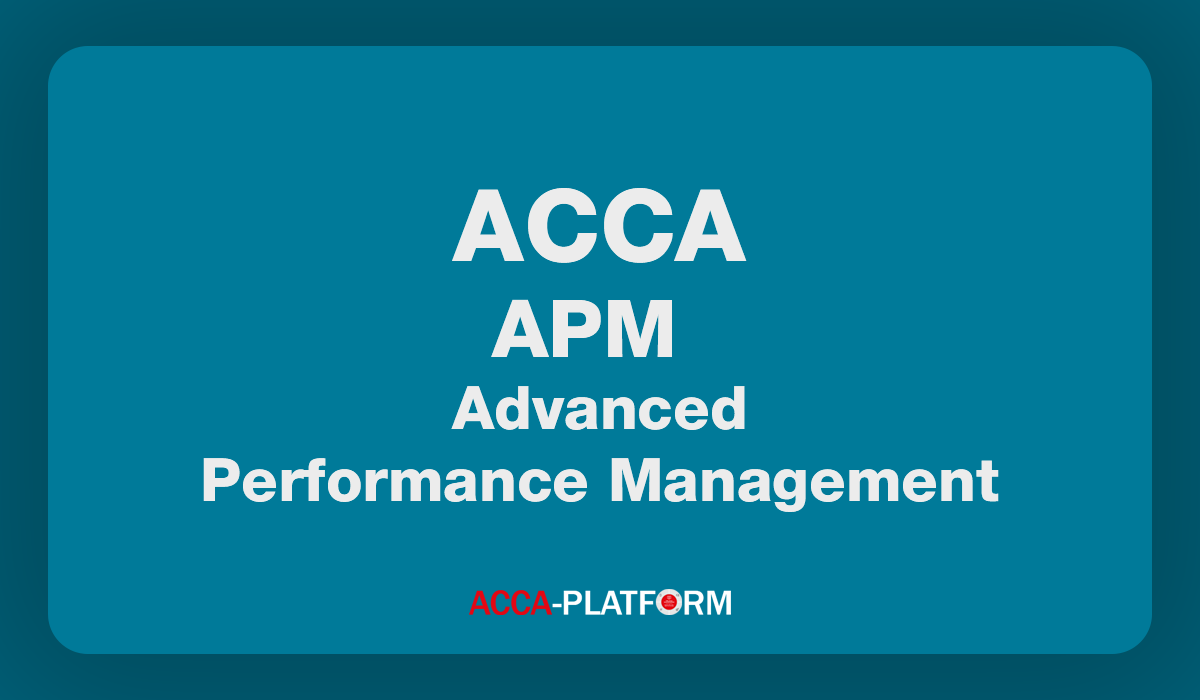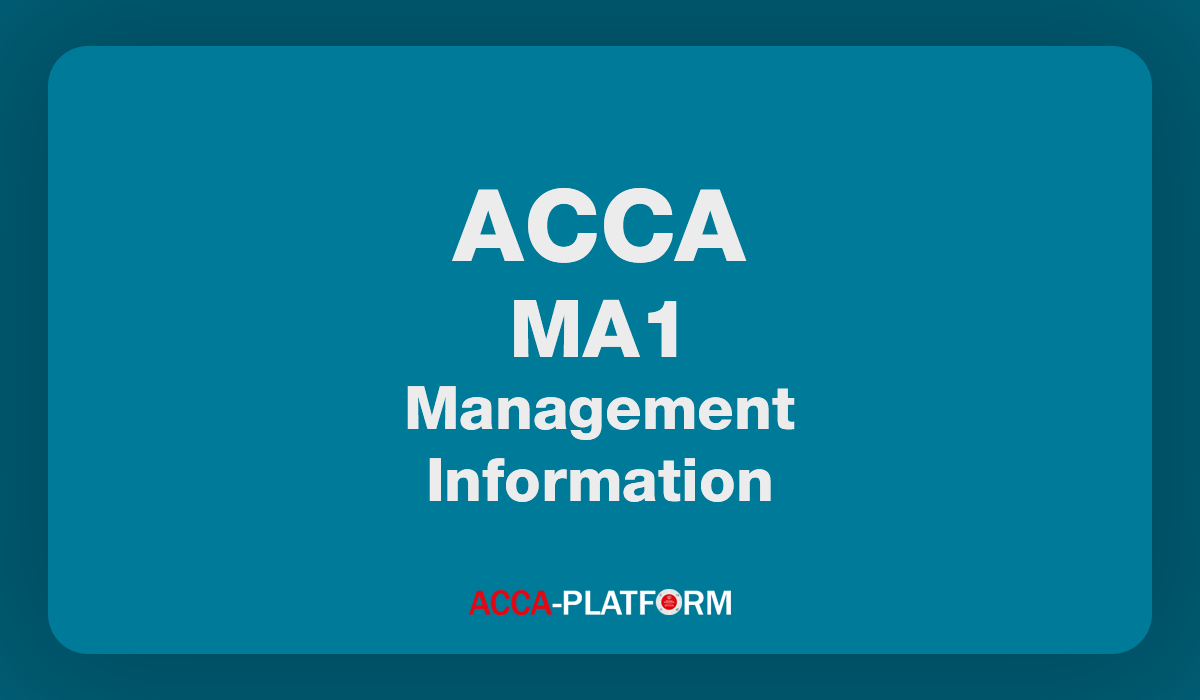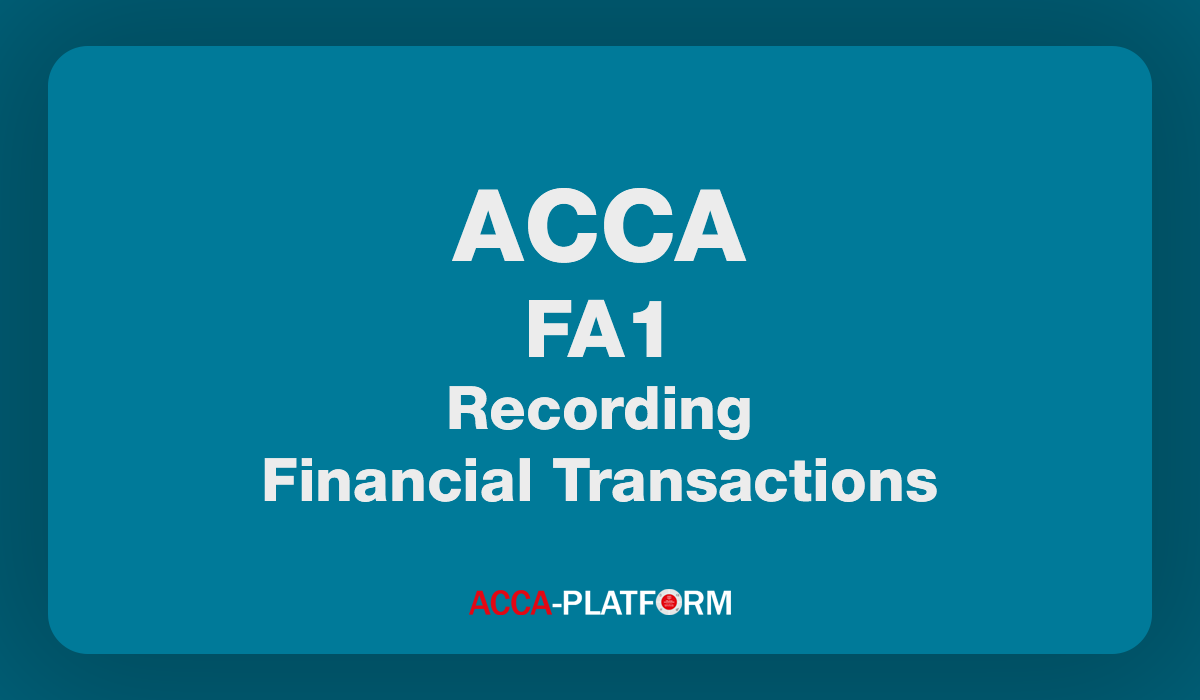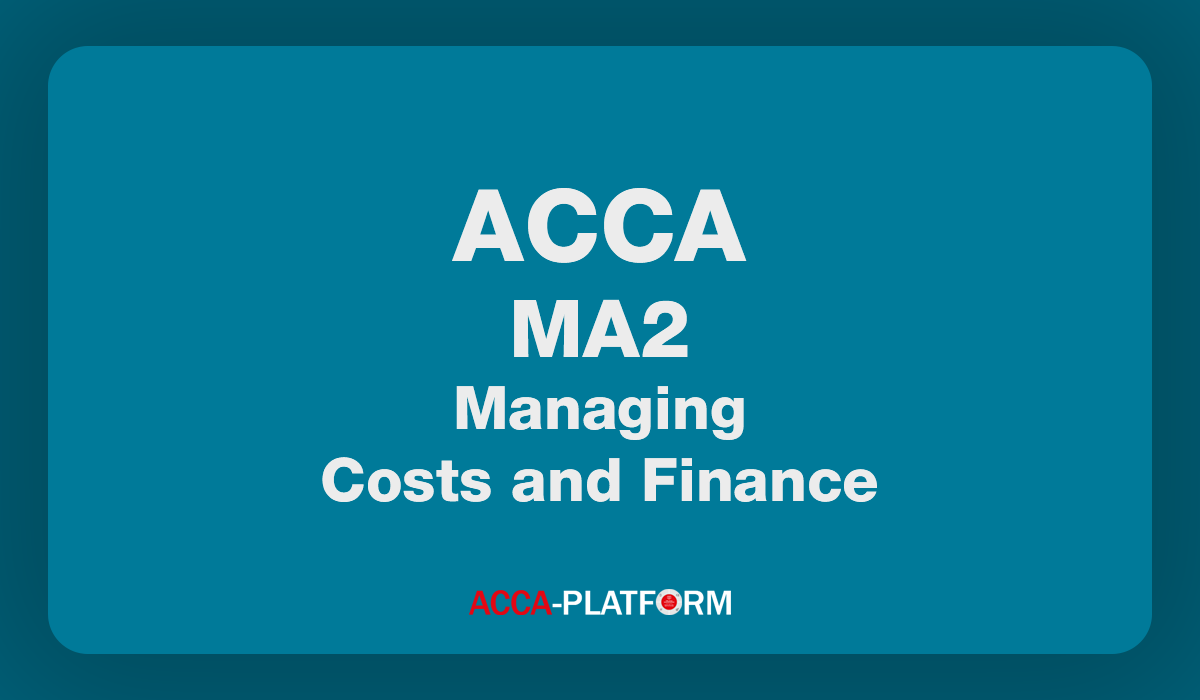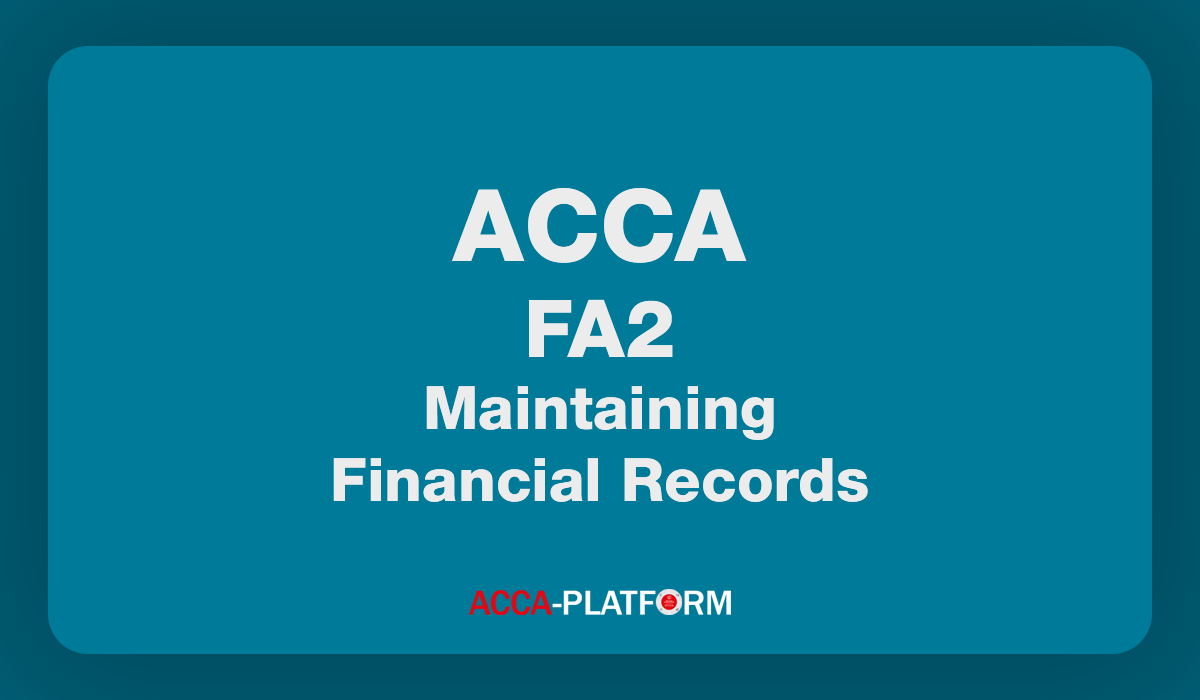Are you searching for comprehensive study materials and essential resources to excel in your P5 Advanced Performance Management examination? The journey through ACCA’s strategic professional level can be challenging, but with the right preparation materials and approach, you can master the P5 (APM) Advanced Performance Management concepts effectively. This guide provides everything you need to know about tackling this crucial ACCA module, from understanding its complexity to accessing quality study resources.
What is P5 (APM) Advanced Performance Management Module of ACCA
The P5 Advanced Performance Management module represents one of the four strategic professional optional papers in the ACCA qualification framework. This module focuses on developing your ability to evaluate and improve organizational performance through strategic management accounting techniques. You will explore advanced performance measurement systems, strategic planning tools, and contemporary management accounting practices that drive business success.
Core Areas Covered in P5 APM
The syllabus encompasses five main areas that form the foundation of advanced performance management:
Strategic Planning and Control – You will learn how organizations develop long-term strategies and implement control systems to monitor progress. This includes understanding how strategic objectives translate into operational plans and performance metrics.
Performance Measurement Systems – The module covers various frameworks for measuring organizational performance, including balanced scorecards, performance pyramids, and contemporary approaches to performance evaluation.
Divisional Performance and Transfer Pricing – You will examine how multi-divisional organizations measure and manage performance across different business units, including complex transfer pricing mechanisms and their impact on divisional behavior.
Performance Analysis and Behavioral Aspects – This area focuses on analyzing performance data and understanding how performance measurement systems influence manager and employee behavior within organizations.
Strategic Performance Measurement – You will explore how organizations align performance measurement with strategic objectives, including the role of benchmarking, target setting, and performance improvement initiatives.
Key Performance Management Frameworks
| Framework | Application | Benefits |
|---|---|---|
| Balanced Scorecard | Multi-perspective performance measurement | Aligns operational activities with strategy |
| Performance Pyramid | Hierarchical performance measurement | Links strategic objectives to operational metrics |
| Building Block Model | Integrated performance measurement design | Ensures comprehensive performance coverage |
| Three E’s Framework | Public sector performance evaluation | Measures economy, efficiency, and effectiveness |
How Difficult to Study and Pass P5 (APM) Advanced Performance Management
The P5 Advanced Performance Management examination presents moderate to high difficulty levels for most ACCA students. Understanding the complexity helps you prepare more effectively and set realistic expectations for your study journey.
Examination Structure and Format
The P5 exam consists of Section A with one compulsory question worth 50 marks, typically a comprehensive case study requiring strategic analysis and performance evaluation. Section B contains two questions worth 25 marks each, from which you must answer both. These questions often focus on specific performance management techniques or contemporary issues in organizational performance.
Common Challenge Areas
Complex Case Studies – The examination frequently presents intricate business scenarios requiring you to analyze multiple performance issues simultaneously. You must demonstrate ability to identify key performance problems and recommend appropriate solutions.
Calculation Requirements – While not as calculation-intensive as other ACCA papers, P5 still requires proficiency in performance measurement calculations, variance analysis, and financial performance evaluation techniques.
Strategic Thinking Application – You must move beyond technical knowledge to demonstrate strategic thinking capabilities, linking performance management concepts to broader organizational objectives and external environment factors.
Contemporary Issues Integration – The syllabus includes current developments in performance management, requiring you to stay updated with modern business practices and emerging performance measurement trends.
Pass Rates and Student Performance
Historical pass rates for P5 typically range between 45-55%, indicating that approximately half of the candidates successfully complete the examination on their first attempt. This relatively moderate pass rate reflects the paper’s challenging nature but also demonstrates that thorough preparation leads to success.
Why to Use BPP Study Materials
BPP Learning Media stands as one of the most trusted providers of ACCA study materials, offering comprehensive resources specifically designed for P5 Advanced Performance Management preparation. Their materials combine academic rigor with practical application, making complex concepts accessible and understandable.
Proven Track Record and Quality
BPP has supported ACCA students for over four decades, developing deep understanding of examination requirements and student learning needs. Their materials undergo continuous updates to reflect changes in ACCA syllabus and examination format, ensuring you receive current and relevant content.
Comprehensive Content Coverage
Structured Learning Approach – BPP materials follow a logical progression through P5 topics, building your knowledge systematically from fundamental concepts to advanced applications. Each chapter includes learning objectives, detailed explanations, and practical examples.
Integrated Assessment Tools – The materials include various assessment methods such as objective test questions, case study exercises, and mock examinations that mirror the actual P5 exam format and difficulty level.
Expert Author Input – BPP employs experienced ACCA tutors and industry professionals to develop their study materials, ensuring content reflects both academic requirements and real-world business practices.
Student Support Features
BPP materials include additional support resources such as online question banks, video lectures, and tutor support forums. These supplementary resources enhance your learning experience and provide multiple ways to engage with P5 content.
Why to Use PDF Workbook Format
PDF workbooks offer numerous advantages for ACCA P5 study preparation, combining convenience with comprehensive content presentation. Understanding these benefits helps you make informed decisions about your study material format.
Accessibility and Convenience
Portable Learning – PDF format allows you to access your P5 study materials anywhere, whether you’re commuting, traveling, or studying in different locations. You can study effectively regardless of your physical location or available internet connectivity.
Multi-Device Compatibility – PDF files work seamlessly across various devices including laptops, tablets, and smartphones, enabling you to switch between devices while maintaining consistent access to your study content.
Search Functionality – PDF format includes powerful search capabilities, allowing you to quickly locate specific topics, concepts, or examples within your study materials. This feature proves invaluable during revision periods.
Cost-Effective Study Solution
PDF workbooks typically offer significant cost savings compared to printed materials while providing identical content quality. You can allocate more resources toward other study aids or examination fees rather than expensive printed textbooks.
Enhanced Study Features
Interactive Elements – Modern PDF workbooks include clickable links, bookmarks, and navigation features that enhance your study experience. You can jump between sections, access appendices, and navigate content more efficiently than traditional printed materials.
Note-Taking Capabilities – Many PDF readers allow you to add personal notes, highlight important sections, and create custom bookmarks. These features help you personalize your study materials and create effective revision tools.
Version Updates – PDF materials can be updated more frequently than printed versions, ensuring you receive the most current content and any corrections or additions made by the publisher.
How to Plan Your P5 Study Schedule
Effective planning forms the foundation of successful P5 preparation. Developing a structured study schedule helps you cover all syllabus areas thoroughly while maintaining consistent progress toward your examination date.
Pre-Study Assessment and Goal Setting
Knowledge Gap Analysis – Begin by assessing your current understanding of performance management concepts. Identify areas where you have prior knowledge and topics requiring more intensive study attention.
Time Availability Calculation – Determine your weekly study hours realistically, considering work commitments, personal responsibilities, and other obligations. Most successful P5 candidates dedicate 15-20 hours per week over 12-16 weeks.
SMART Objectives Setting – Establish specific, measurable, achievable, relevant, and time-bound study goals for each phase of your preparation. For example, “Complete Chapters 1-3 with 80% practice question accuracy by Week 4.”
Structured Study Timeline
| Study Phase | Duration | Focus Areas | Key Activities |
|---|---|---|---|
| Foundation | Weeks 1-4 | Core concepts and frameworks | Read, summarize, basic practice |
| Development | Weeks 5-8 | Advanced techniques and applications | Case studies, calculations, analysis |
| Integration | Weeks 9-12 | Cross-topic connections | Mock exams, complex scenarios |
| Revision | Weeks 13-16 | Exam technique and weak areas | Targeted practice, final review |
Weekly Study Structure
Concept Learning Sessions – Dedicate 60% of your weekly study time to learning new concepts, reading study materials, and understanding theoretical frameworks. Focus on one major topic per week to ensure comprehensive coverage.
Practice Application Time – Allocate 30% of your time to practicing questions, working through case studies, and applying learned concepts to practical scenarios. This reinforces theoretical knowledge through practical application.
Review and Consolidation – Reserve 10% of your study time for reviewing previously covered topics, updating your notes, and ensuring retention of earlier learned material.
How to Effectively Prepare for the ACCA P5 APM Exam
Successful P5 preparation requires strategic approach combining thorough content mastery with effective examination technique development. Understanding both aspects ensures you maximize your chances of passing this challenging paper.
Content Mastery Strategies
Active Reading Techniques – Rather than passive reading, engage actively with your study materials. Create mind maps, summarize key points in your own words, and develop concept connections between different topic areas.
Case Study Analysis Skills – P5 heavily emphasizes case study analysis, requiring you to extract relevant information, identify performance issues, and develop appropriate recommendations. Practice analyzing business scenarios regularly to develop these critical skills.
Contemporary Issues Awareness – Stay informed about current developments in performance management through business publications, academic journals, and professional body updates. P5 often includes questions about modern business practices and emerging trends.
Practice Question Strategy
Progressive Difficulty Approach – Start with basic objective test questions to build confidence, then progress to more complex scenario-based questions. Finally, tackle full exam-standard case studies under timed conditions.
Answer Technique Development – Learn to structure your answers effectively, using clear headings, logical progression, and appropriate business terminology. Practice writing concise yet comprehensive responses within time constraints.
Mark Allocation Awareness – Understand how examiners allocate marks across different answer components. Spend appropriate time on high-mark sections while ensuring you complete all required elements.
Examination Technique Refinement
Time Management Mastery – Develop strict time management discipline through regular practice under examination conditions. Allocate specific time periods for reading, planning, and writing each answer component.
Question Requirements Analysis – Learn to identify exactly what each question asks for, distinguishing between description, analysis, evaluation, and recommendation requirements. Address all parts of multi-faceted questions comprehensively.
What is the Last Minute Guide for P5 Preparation
The final preparation phase requires focused strategy targeting high-impact revision activities and examination technique polishing. Effective last-minute preparation can significantly improve your examination performance.
Final Week Revision Strategy
Core Concept Reinforcement – Review fundamental performance management frameworks, key ratios, and essential formulas. Ensure you can recall and apply basic concepts quickly and accurately under pressure.
Weak Area Targeting – Identify your weakest topic areas through practice test performance analysis. Concentrate additional revision time on these areas while maintaining confidence in your stronger subjects.
Examination Logistics Preparation – Confirm examination venue, timing, and required materials. Prepare everything needed for examination day to minimize stress and ensure smooth logistics.
Key Areas for Final Review
Performance Measurement Systems – Refresh your knowledge of balanced scorecard components, performance pyramid levels, and building block model elements. These frameworks appear frequently in examination questions.
Divisional Performance Evaluation – Review transfer pricing methods, divisional performance measures, and behavioral implications of performance measurement systems. Practice relevant calculations under time pressure.
Strategic Analysis Tools – Ensure familiarity with SWOT analysis, Porter’s five forces, and other strategic analysis frameworks that support performance management decision-making.
Examination Day Success Tips
Strategic Question Selection – In Section B, quickly review both questions and select those where you can demonstrate strongest knowledge and analytical skills. Don’t spend excessive time making this decision.
Answer Planning Discipline – Spend 10-15 minutes planning each major answer before writing. This investment prevents rambling responses and ensures comprehensive coverage of question requirements.
Professional Presentation – Write clearly, use appropriate business terminology, and structure answers professionally. Examiners appreciate well-organized responses that demonstrate business acumen.
Advanced Study Techniques for P5 Success
Mastering P5 Advanced Performance Management requires sophisticated study approaches that go beyond basic reading and note-taking. These advanced techniques help you develop deeper understanding and stronger analytical capabilities.
Integrated Learning Approach
Cross-Syllabus Connections – Link P5 concepts with knowledge from previous ACCA papers, particularly F5 Performance Management and P3 Business Analysis. Understanding these connections strengthens your overall business knowledge foundation.
Real-World Application Projects – Analyze actual company annual reports and identify how they implement performance management systems. This practical application reinforces theoretical learning through contemporary business examples.
Peer Discussion Groups – Form study groups with other P5 candidates to discuss complex topics, share insights, and practice explaining concepts. Teaching others helps solidify your own understanding.
Technology-Enhanced Learning
Digital Note-Taking Systems – Use applications like OneNote or Notion to create interconnected study notes that link related topics across different chapters. This creates a comprehensive knowledge web for easier revision.
Video Learning Integration – Supplement your PDF workbook with video lectures and tutorials that explain complex concepts through visual and auditory channels. Different learning modalities reinforce understanding.
Online Practice Platforms – Utilize digital question banks and mock examination platforms that provide immediate feedback and performance analytics. Track your progress and identify improvement areas systematically.
Key Takeaways
- P5 Advanced Performance Management focuses on strategic performance measurement and organizational improvement techniques
- The examination combines theoretical knowledge with practical application through case study analysis
- BPP study materials offer comprehensive, expert-developed content with proven track records
- PDF workbook format provides convenience, cost-effectiveness, and enhanced study features
- Effective preparation requires 15-20 weekly study hours over 12-16 weeks with structured planning
- Success depends on mastering both technical content and examination techniques
- Last-minute preparation should focus on weak areas, core concepts, and examination logistics
- Advanced study techniques including technology integration and peer collaboration enhance learning effectiveness
Frequently Asked Questions
How long should I study for P5 Advanced Performance Management?
Most successful candidates dedicate 12-16 weeks of structured study, spending 15-20 hours per week. This timeframe allows comprehensive coverage of all syllabus areas plus adequate practice and revision time.
Is P5 more difficult than other ACCA strategic professional papers?
P5 presents moderate to high difficulty with pass rates typically between 45-55%. The challenge lies in applying strategic thinking to complex business scenarios rather than technical calculations.
Can I pass P5 using only PDF study materials?
Yes, comprehensive PDF workbooks like those from BPP provide sufficient content for exam success. However, supplement with practice questions, mock exams, and current business reading for optimal preparation.
What calculator functions are most important for P5?
P5 requires basic calculator functions for variance analysis, ratio calculations, and financial performance measures. Focus on percentage calculations, growth rates, and simple statistical functions.
How should I approach P5 case study questions?
Read the scenario carefully, identify key performance issues, apply relevant frameworks, and provide balanced recommendations. Structure your response with clear headings and logical progression.
What contemporary issues should I focus on for P5?
Stay informed about digital transformation impacts on performance measurement, sustainability reporting, behavioral economics applications, and modern management accounting techniques.
Conclusion
Successfully navigating the P5 Advanced Performance Management examination requires comprehensive preparation, quality study materials, and strategic approach to learning. BPP’s PDF workbooks provide an excellent foundation for your study journey, offering expert content in convenient, cost-effective format. By following structured study plans, focusing on both technical knowledge and examination techniques, and staying current with contemporary performance management practices, you position yourself for examination success.
The key to mastering P5 (APM) Advanced Performance Management lies in understanding that this paper tests your ability to think strategically about organizational performance rather than just technical competence. Combine thorough preparation with consistent practice, and you’ll develop the analytical skills and business acumen necessary to excel in this challenging but rewarding ACCA module.
